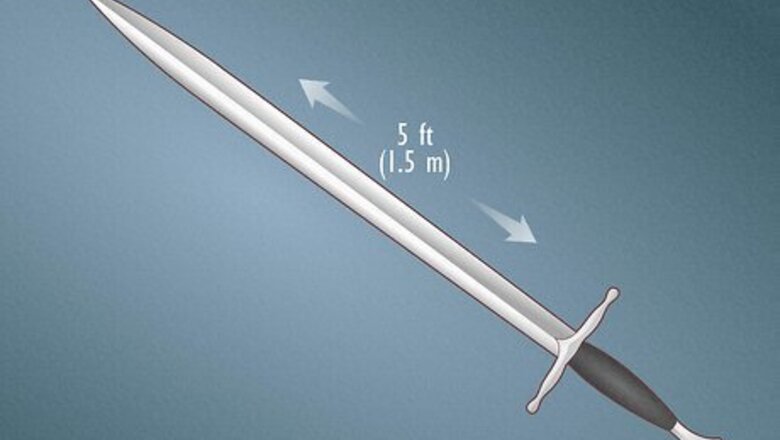
views
Melee Weapons: Swords
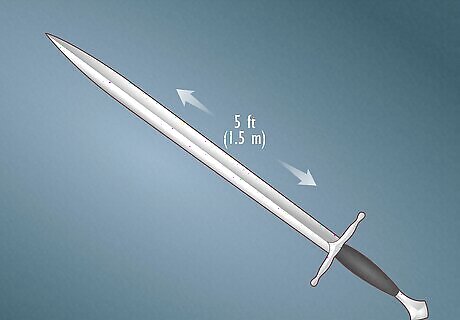
Greatsword When you picture a European medieval knight wielding a comically giant sword, you’re picturing a greatsword. These swords often measured over 5 feet (1.5 m) in length and weighed a (surprisingly light) 5–10 pounds (2.3–4.5 kg). They were meant to be wielded with two hands so that the fighter using the weapon could utilize both of the bladed sides of the weapon by swiping in either direction.
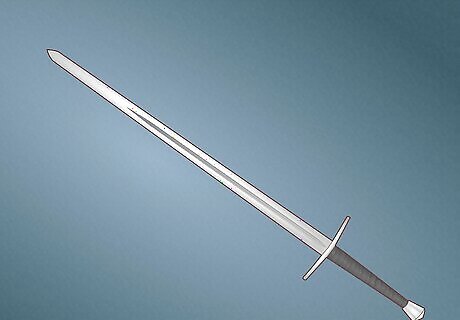
Longsword Ironically, the longsword was shorter than the greatsword. These medieval weapons were lighter and shorter than the greatsword to make it easier for knights to hit weak points in armor. It was a notable innovation over the greatsword as well because the longsword could be wielded with two hands, for maximum power, or with one hand and a shield in the other for a more defensive strategy.
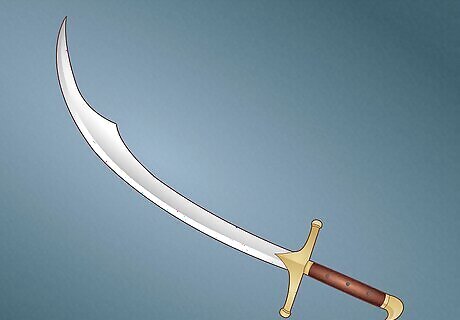
Scimitar Scimitars broadly refer to any sword from the Middle East or Asia that has a curve in the blade. These curved swords date all the way back to the 9th century, when Turks famously used them from horseback to gain big advantages in combat. The curve of the blade made it much easier to hit targets when striking at someone from a horse, since the curve could absorb the momentum more easily than a straight weapon.
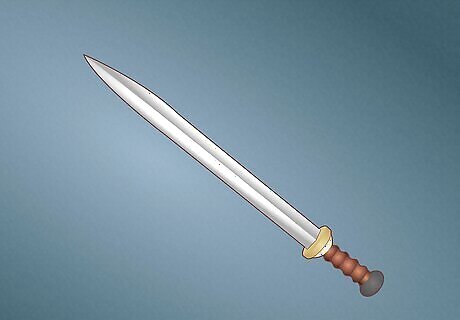
Gladius The gladius (also known as the “Hispanicus”) was the favored short sword of the Roman Empire. Gladii are short swords with a tapered point that made them perfect as both defensive and offensive weapons in shorter ranges. These lightweight weapons were deadly when used to stab, slash, or poke, which afforded Roman legionnaires the freedom to attack however they wanted.
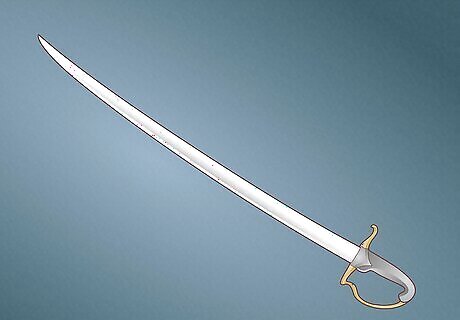
Saber Sabers are a lot like scimitars—they’re defined by their Eastern origins and curved blades. Sabers also have larger handguards to protect the wielder, and they’re often heavier than scimitars.
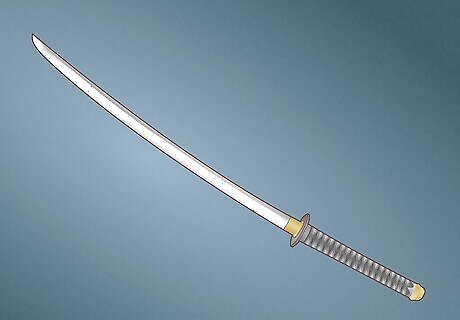
Katana Also famously known as the Samurai sword, the katana is the historic weapon of the Japanese Samurai. These swords were long and slightly curved, with a blade that maintained the same angle and thickness for its entire length. These swords were made of high-carbon steel and were meticulously crafted for the bearer. They were storied for their fine cutting ability and ease of use.
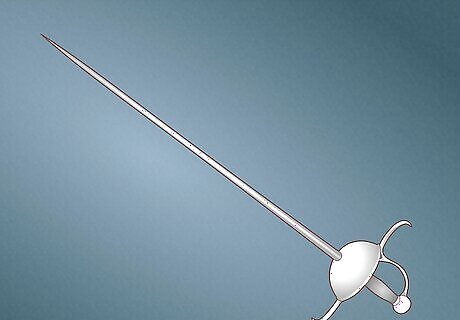
Rapier You see rapiers all the time if you watch fencing! Rapiers are pointed, slender swords designed for poking and thrusting. These swords are so thin that they often make whooshing noises when they’re swung. Fun fact: Rapiers were originally invented when duels were really popular. Their design is intended to minimize the odds that someone dies during a duel, which is why they only have points (there are no bladed edges).
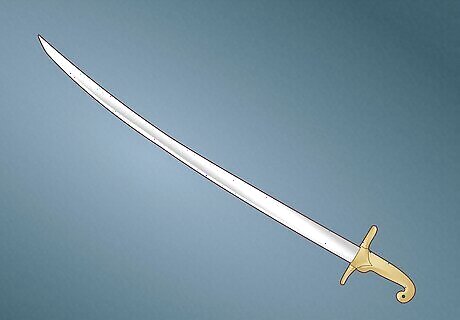
Mameluke Based on the sabres wielded by the Mamluk warriors of the Ottoman Empire, the Mameluke sword is a (usually ceremonial) sword carried by many US military personnel. These swords are typically slightly curved and engraved with elaborate insignias. Today, they’re a pride of many officers in the US Marines.
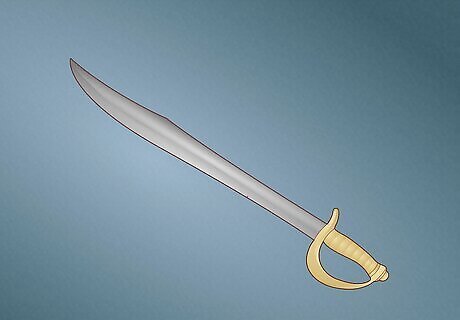
Cutlass A cutlass refers to a short sword or sabre with a thick hilt and handguard. They can be straight or slightly curved. They were popular among sailors and pirates because they were thick and heavy enough to cut through rope, canvas, wood, animal hide, and meat, which really comes in handy if you’re sailing the high seas in the 1500s.
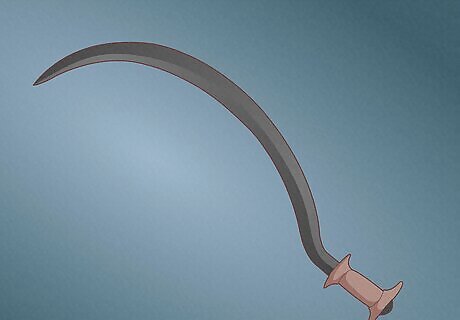
Shotel Shotels are giant double-edged blades with a steep curve. They were famously wielded by Ethiopian warriors for centuries, and they were a status symbol among noblemen and warriors alike. The giant curve was designed to do two things: behead people and get around shields.
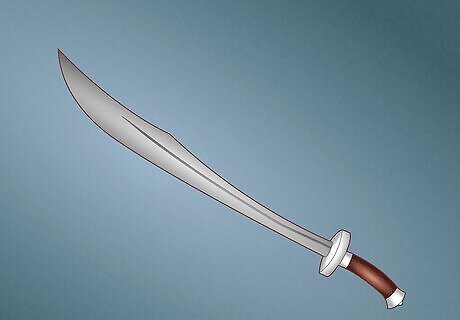
Dao Daos are a broad category of Chinese swords. They can be curved or straight, but they tend to have wider blades than katanas, scimitars, or sabres. Many Chinese martial arts still train with the weapon, as it is seen as a historically significant part of Chinese culture.
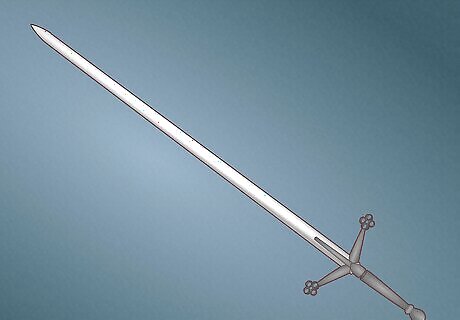
Claymore The word “claymore” comes from the Gaelic word for greatsword, so the two terms are often used interchangeably. What makes Claymores distinct is their quillions. Quillions are the cross bars that sit between the blade and the hilt. On greatswords, they either don’t exist or they sit perpendicular to the blade. Claymores have quillions that point up towards the point of the sword. Claymores were popular all over Europe, but they originated in Scotland. This is why they’re sometimes referred to as “Scottish greatswords” or “Scottish swords.”
Hand Melee Weapons
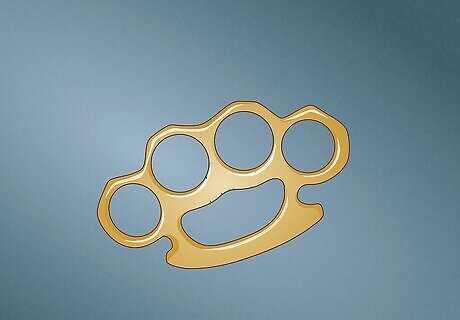
Brass knuckles Brass knuckles date all the way back to 12th-century India, where they were used in gladiatorial games known as Vajra-Musti. Today, brass knuckles refer to any unbladed weapon you wear on your hands. They make punches absolutely devastating, which is why they’re typically illegal everywhere these days.
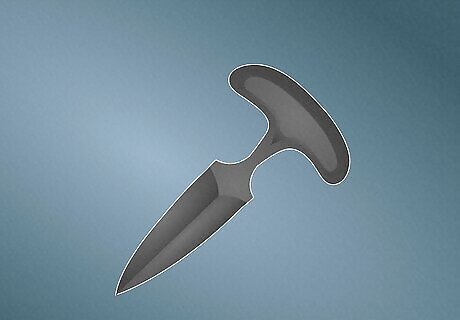
Push daggers There are a bunch of variations, but push daggers generally refer to bladed weapons that sit in your fist. They basically turn your punch into a stab. The blades are often wide and short, making them useful only in extremely close combat. They were invented and popularized by French soldiers in World War I, where they were used to fend off invaders in their trenches.
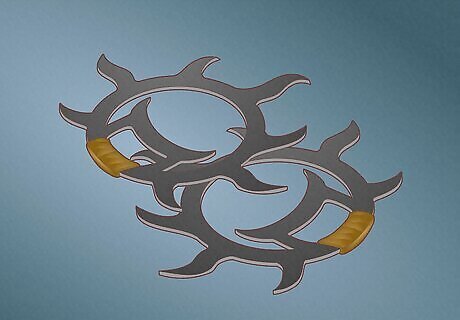
Wind and fire wheels Wind and fire wheels are really unique weapons with mysterious origins. They’re associated with the Chinese martial arts of baguazhang and taijiquan, but they likely predate both of them. These are circular-bladed weapons with a flat (usually padded) handles. They’re meant to do maximum damage when slashing and swinging at your opponent.
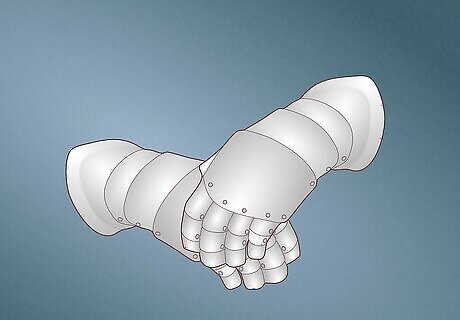
Gauntlets Gauntlets are technically a type of armor, but they’re often used as weapons. These gloves are padded and covered in armor to protect the hands in combat. However, they also make punching a lot more painful for the person on the other end of your fist. Fun fact: The phrase “throw down the gauntlet” comes from the practice of challenging someone to a duel. You weren’t traditionally allowed to wear armor during a Gentleman’s duel, so “throwing down the gauntlets” came to symbolize getting ready to challenge someone.
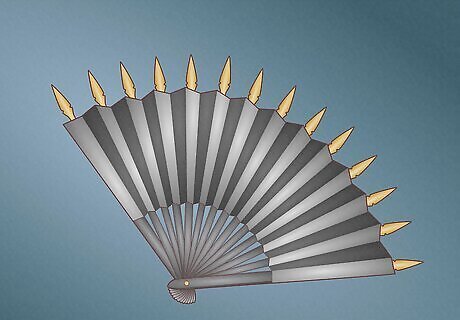
Japanese fan Also known as the “tessen” or “Japanese war fan,” these weapons look identical to the traditional Japanese hand fans you’d use to blow cool air on yourself when it’s hot out. The difference is that Japanese fans were made with iron and other metals, and often had bladed edges to cut through would-be attackers. Fun fact: These fan weapons were invented in a period of Japanese history when swords and other weapons were becoming increasingly difficult to carry without attracting the wrong kind of attention from the law. Metal-infused fans were easy to carry without anyone questioning why you had one.
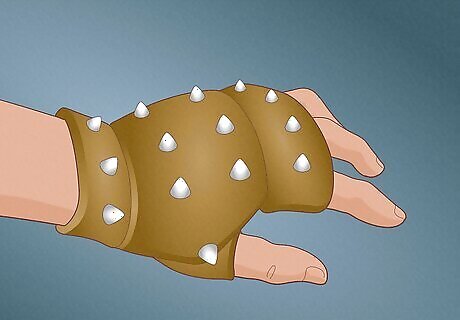
Cestus A cestus is basically a boxing glove. These hand wraps were used in ancient Greece and Rome in combat sports and warfare. They were made out of leather, iron, and often had pointed tips on the knuckles designed to cause even more damage.
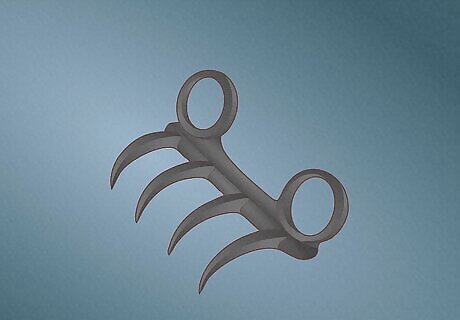
Tiger claws Technically known as bagh nakhs, tiger claws are an ancient Indian weapon. They are sort of like brass knuckles in the sense that they slot onto your fingers so you can wield them while making a fist. However, tiger claws had little daggers that stuck out of the hand, making them an efficient stabbing and slashing weapon.
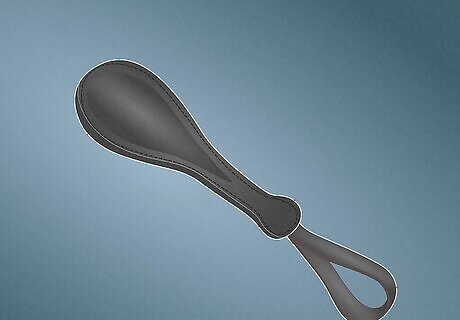
Blackjack Blackjacks are very small clubs with heavy weights in them. They were traditionally carried by law enforcement in the United States and Western Europe, since they could be used as a small club or a punching tool. When used as a punching tool, you wrap your knuckles around the weighted portion to reinforce your wrist and add power to your blows.
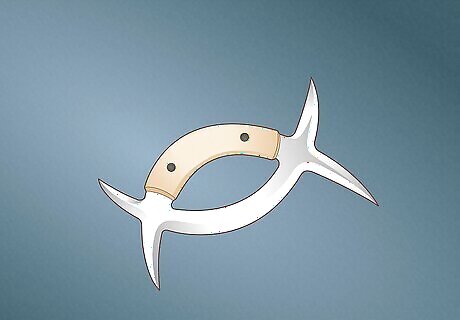
Deer horn knives Deer horn knives are an ancient Chinese weapon associated with the martial art of baguazhang. These handheld blades contain overlapping curved edges with a handle, making them perfect for more acrobatic and aesthetically interesting combat maneuvers.
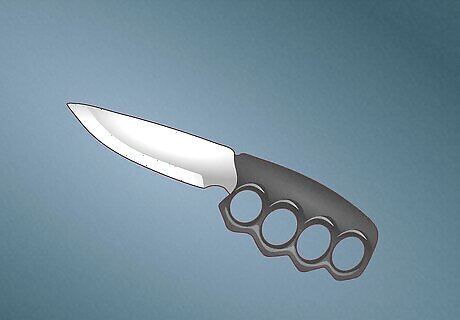
Knuckle knives Also known as trench knives, knuckle knives are a general category of weapon that includes anything that qualifies as a brass knuckle with a knife. These are fairly modern inventions, with their first documented use in World War I.
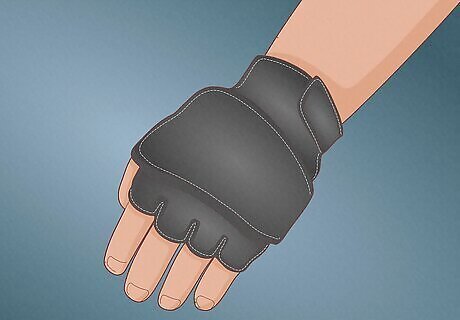
Weighted gloves Weighted gloves are what they sound like: gloves filled with iron or metal weights to make punches more powerful. They’re illegal basically everywhere due to the fact that they’re so easy to conceal.
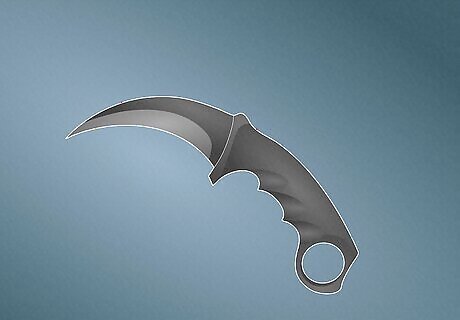
Karambit Karambits are a type of folding knife mainly used for self-defense. The grip is designed for your hand to hold them comfortably, so you can easily pull them out without revealing that you were bringing out a weapon. The curved blades are also useful for working with agriculture and crops, which is what they were originally used for in Southeast Asia.
Melee Knives & Daggers
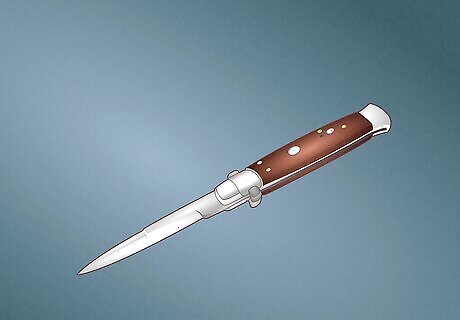
Stiletto First developed in the 15th century in Italy, the stiletto is usually automated, which turns it into a “switchblade” stiletto dagger that tapers to a fine point, making it ideal for stabbing. They are historically a favorite of ruffians and ne’er-do-wells, which is why they’re outlawed in most states and countries.
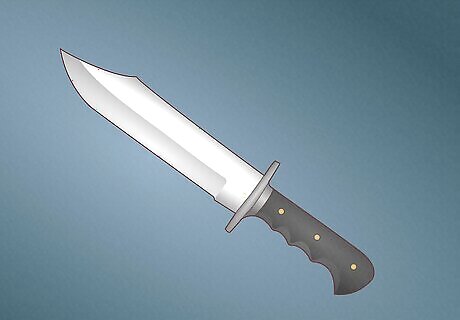
Bowie knife Named after the Alamo soldier James Bowie, the Bowie knife is a large hunting knife with a flat, thick blade. Its slightly curved edge was meant to make butchering animals easy, and the flat side was perfect for smashing nuts, bones, and other various items.
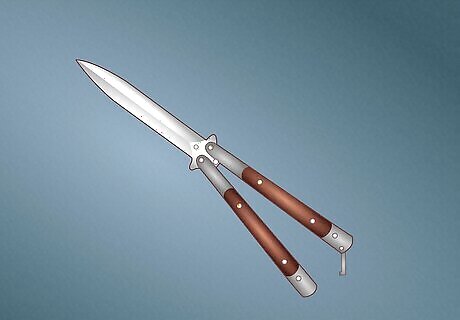
Butterfly knife Also known as balisongs, the butterfly knife is a folding knife with two blade covers that flip open to make a handle. They’re ancient weapons that seem to have originated either in ancient France or the Philippines, where they were used for acrobatic martial arts.
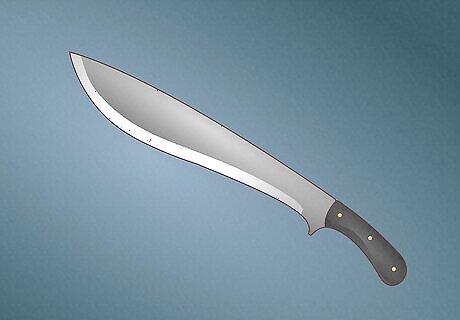
Machete Machetes are long, flat blades attached to a handle. They were originally invented to harvest bananas, sugar cane, corn, and other crops, but today they’re a multi-use tool that is often used for self-defense as well. Fun fact: The word “machete” comes from the Spanish word “macho,” which originally meant “hammer.”
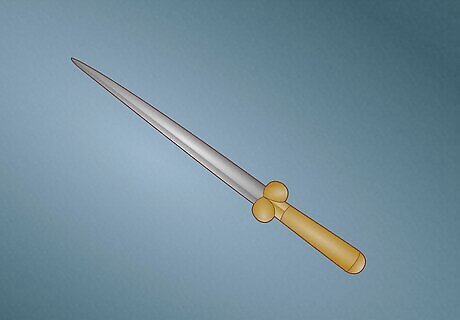
Bollock Named after its suggestively shaped hilt, the bollock is a 14th-century dagger that was often worn as a sidearm by Englishmen. They were popular among noblemen in Europe, and were mainly used as decoration.

Kris Also known as a keris, this Indonesian dagger possesses a wavy, asymmetrical blade that supposedly made it even more dangerous when causing internal damage. They’re an important cultural item in Indonesia, where these blades are said to possess magical powers. Today, they’re mainly worn for decoration.
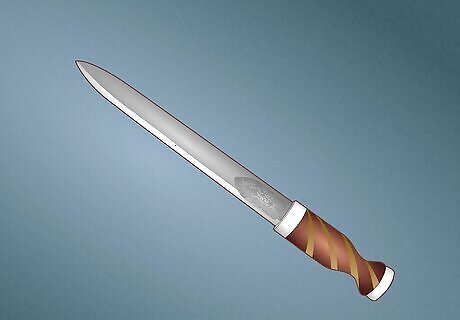
Dirk The dirk is a Scottish weapon in origin, but you can find them all across the globe today. A dirk refers to any knife with a one-sided blade that you carry in a sheath. Today, they’re mainly collected by enthusiasts and worn in Scottish (and other European) military ceremonies.
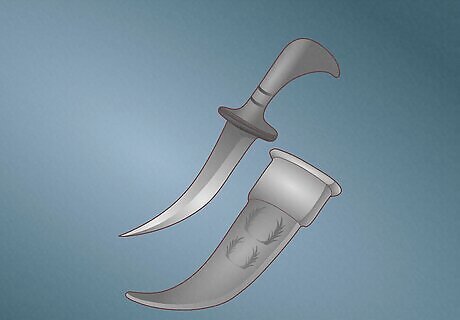
Kirpan The first completely religious weapon on our list, the kirpan is an article of faith in the Sikh religion. Followers carry one for the same reason a Christian may wear a cross, or a Jew might wear a yarmulke. The kirpan is meant to symbolize the Sikhs’ duty to stand up to injustice everywhere. It’s a small, curved knife that sits in a decorative sheath. Kirpans are rarely sharp enough to cut by design. Some Sikhs even glue them inside their holster.
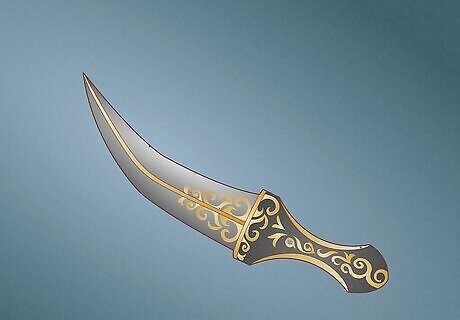
Jambiya An iconic weapon in Yemen, the jambiya is a symbol of manhood, honor, and heritage. These heavily curved and ornamental blades are carried in public as a fashionable cultural element. They date back all the way to the 15th century.
Melee Bludgeoning Weapons
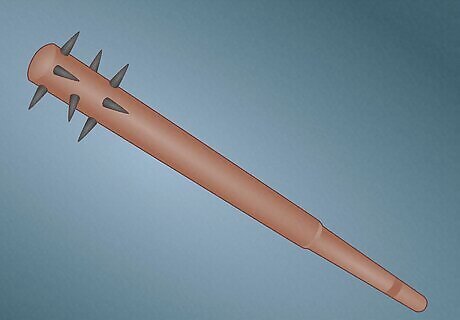
Club Also known as a bludgeon, cosh, or cudgel, a club is simply a short staff or stick made of wood that you use to hit stuff. In Medieval Europe, some people would insert nails or blades onto the end of the club to make them even more deadly.
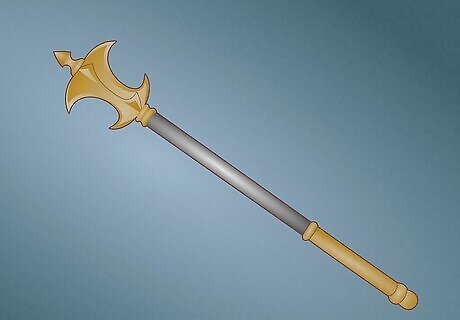
Mace Maces are functionally just clubs with large, spiky orbs stuck on the end of them. They were popular among soldiers in Medieval Europe, where the heads were often made of stone, copper, or bronze. These weapons were especially popular among the peasant class because they were super inexpensive to make. Fun fact: Today, pepper sprays are often referred to as “mace” because “mace” was a popular brand of the spray, kind of like Kleenex for tissue. Sprayable “mace” has nothing to do with actual maces.
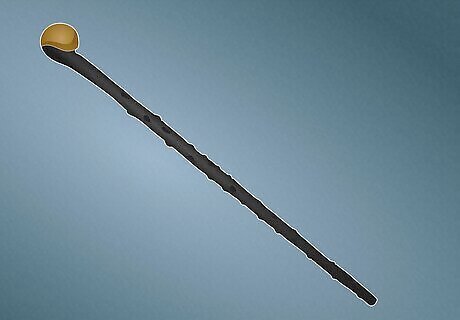
Shillelagh Pronounced “shill-lay-lee,” the shillelagh is a long wooden walking stick with a knob on the top. That knob, it turns out, makes hitting people a lot more effective. These weapons are traditionally made out of blackthorn or oak, but today you can find them made out of all kinds of wood. Fun fact: The word “Shillelagh” comes from the Gaelic phrase sail éille, which means “thonged willow-stick.”
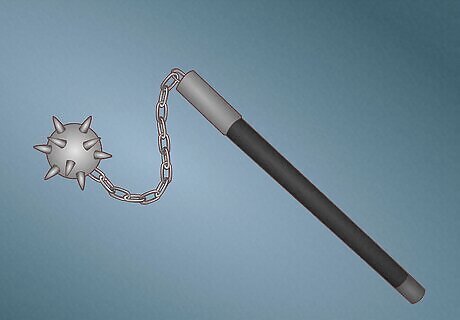
Flail A flail is basically a mace with a chain separating the ball at the end from the handle. The chain made it easier to swing the head of the weapon around so that you could hurl it at an enemy while maintaining some distance. Despite often appearing in movies and TV shows about ancient warfare, flails are mainly a modern invention.
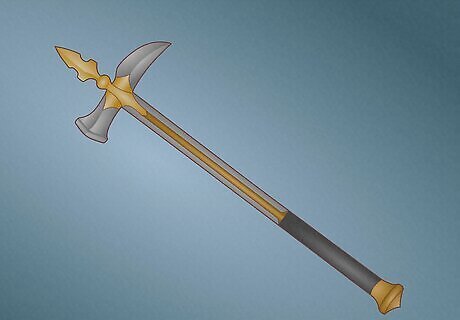
Warhammer As plate armor increasingly became better and better at defending against bladed weapons, 15th-century knights looked for a more efficient option. Thus, the warhammer was born. It doesn’t matter how much armor someone is wearing if you’re striking them with a giant, heavy hammer.
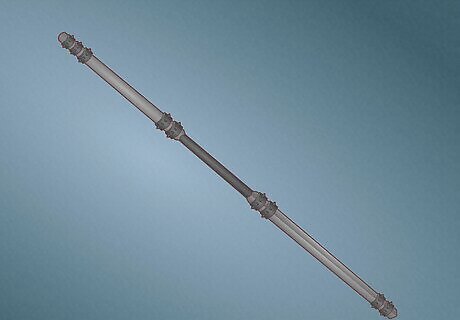
Quarterstaff A favorite among wizards in Dungeons & Dragons games, the quarterstaff was a simple walking stick that was designed to be swung as a weapon when measures called for self-defense.
Melee Axes and Spears
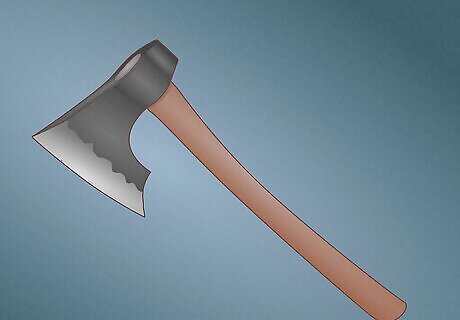
Battle axe There are actually dozens of different types of battle axes that have been popular all the way since 32,000 BC. Generally speaking, any axe with a single blade that is wielded in combat can qualify as a battle axe. These weapons were relatively easy to make and much more intimidating than a sword, which is likely why they’ve been so popular throughout history. If it has two blades, it’s a double-headed axe (even if it’s used in battle).
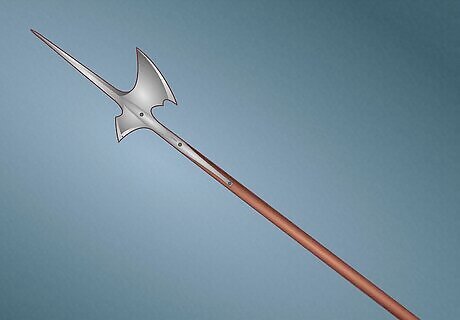
Halberd The halberd was invented to improve your odds when fighting a knight in armor. It’s a longer weapon with a sharp point attached to an asymmetrical axe blade at the end of a long pole. It’s a versatile weapon that can be used to stab, slash, thrust, or push your enemy away.
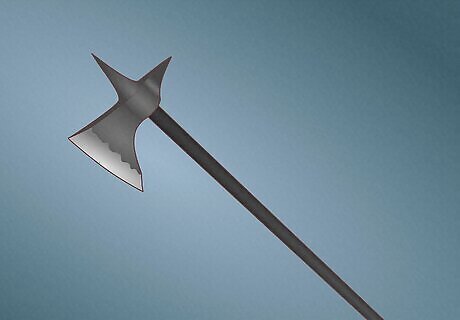
Poleaxe The poleaxe is a pretty straightforward weapon—it’s a long pole with an axe at the end! It was popular among infantry in Medieval Europe because it was effective against armed cavalry. They were also apparently a popular option among duelists, probably because it’d be easy for the audience to see the action with such long weapons.
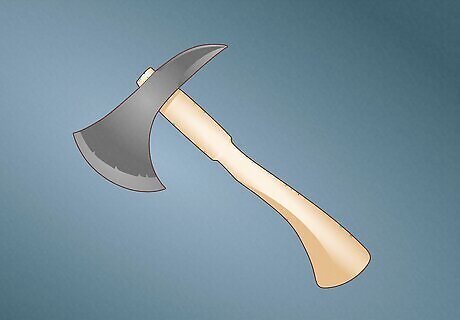
Tomahawk The tomahawk is a Native American invention that served as a weapon, status symbol, and tool. The tomahawk resembles an axe with a soft curve in the handle, which made it easy to throw in the event that the user needed a range weapon. The tomahawk was a powerful symbol among many tribes, and the weapon was often used in rituals, dances, and as part of major peace treaties.
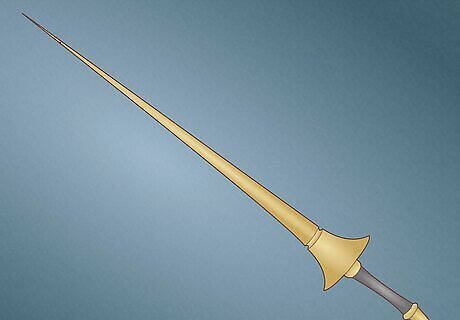
Lance The lance is a mounted weapon historically used by cavalry. It’s a long spear with a thin point on the end designed specifically for thrusting. These weapons were also popular in jousting tournaments. What’s the difference between a lance and a spear? A lance is a type of spear! “Spear” is just a broad category of weapon (like “axe” or “sword”) that refers to melee weapons that sit on the end of a long shaft.
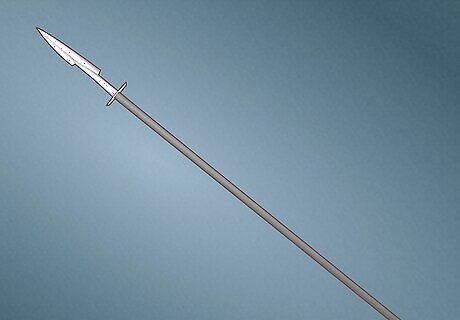
Glaive Glaives are a type of spear with a long, thick blade at the end. They were versatile weapons that could cut, thrust, or slice, and they doubled as an agricultural tool when the owner of the weapon wasn’t at battle.
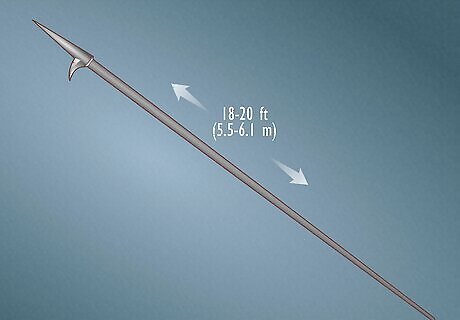
Pike To put it really simply, a pike is just a very, very, very long spear. It’s a simple weapon with a basic point at the end of it, but the shaft would typically range 18–20 feet (5.5–6.1 m). They were primarily used as “breach” weapons that could take down a line of infantry or cavalry before the opponent ever got within striking range of their own weapons.
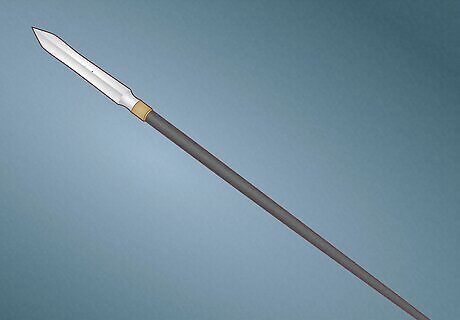
Yari The yari is a Japanese spear with a symmetrical blade at the end of it. It was a popular weapon in medieval Japan. It was a versatile weapon that was especially good at slicing through armored opponents. It could also be fixed with a variety of different blades, depending on the preferred combat style of the owner.
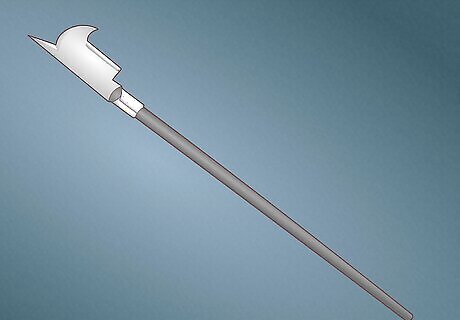
Bill Hook Also known as the English bill, the bill hook is a distinct weapon that doubled as a scythe for farming. It was a popular weapon among English and Western European soldiers who also worked on farmland. The odd shape of the blade at the end contained a hook and a point, depending on whether the wielder wanted to slice, dice, or stab.
Are melee weapons used today?
Yes, although they’re rarely used outside of self-defense. When it comes to modern offensive weapons, it’s pretty hard to beat a gun in the efficiency category. But melee weapons are still used, especially in makeshift emergencies or for self-defense. Popular modern melee weapons include: Combat knives Batons Baseball bats Crowbars Gunblades Pepper spray Cat ear knuckles (like brass knuckles but with pointy “cat ears”)




















Comments
0 comment